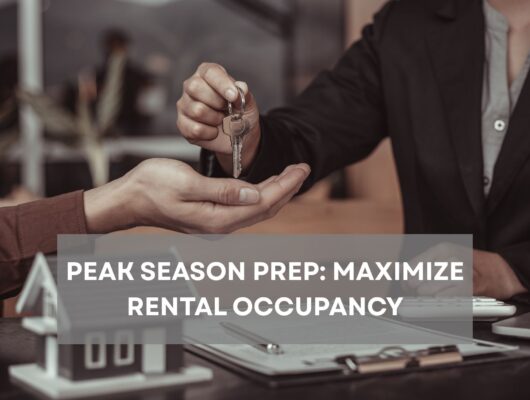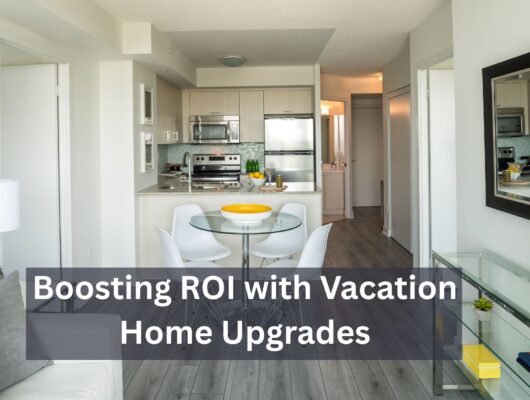How to Manage Your Short-Term Rental Remotely and Maintain a Seamless Guest Experience
Managing an Airbnb property remotely is not only possible but can be highly efficient with the right technology, a strong local support team, and proactive property oversight. Whether you’re an investor managing multiple rentals or an Airbnb host living in another city, remote property management requires strategic systems to ensure smooth operations and a high-quality guest experience.
This guide will walk you through the key elements of remote Airbnb management, from hiring reliable cleaning teams to leveraging smart home technology and implementing routine property inspections.
1. Setting Up Reliable Local Support for Short-Term Rentals
Why Local Partnerships Are Essential for Airbnb Success
Remote Airbnb management relies on trusted local teams for cleaning, maintenance, and guest communication. Without a dependable local support system, property issues can quickly escalate and lead to negative guest reviews and lost revenue.
How to Find and Train Local Cleaning and Maintenance Teams
✔️ Hire and Test Cleaning Teams Beforehand
- Conduct thorough interviews and background checks.
- Assign a test cleaning task to evaluate performance and reliability.
- Ensure cleaners understand Airbnb standards and notify you of damages or supply shortages.
✔️ Always Have a Backup Team
- Hire at least two cleaning teams to prevent scheduling conflicts.
- Maintain relationships with local handymen, plumbers, and electricians for emergency repairs.
✔️ Set Clear Cleaning and Maintenance Protocols
- Provide a detailed cleaning checklist to maintain consistency.
- Establish a communication channel (WhatsApp, Slack, or a property management app) for quick updates.
📌 Pro Tip: Consider offering performance-based bonuses to incentivize cleaning teams to report property conditions and handle last-minute turnovers efficiently.
2. Using Smart Home Technology for Remote Airbnb Management
Why Smart Home Devices Are Essential for Remote Hosts
Technology plays a key role in monitoring and managing your Airbnb property from afar. The right smart home setup allows you to:
✔️ Automate guest check-ins and check-outs
✔️ Monitor security and property conditions remotely
✔️ Reduce theft, unauthorized parties, and maintenance issues
Best Smart Home Tools for Remote Airbnb Hosts
🔑 Smart Locks – Enable remote check-ins and eliminate the need for physical keys.
📹 Security Cameras (at Entrances Only) – Monitor who enters the property without violating guest privacy.
📢 Noise Sensors – Detect excessive noise levels and prevent complaints or rule violations.
🔋 Battery Monitoring – Keep track of smart lock, camera, and thermostat battery levels to avoid disruptions.
🌡️ Smart Thermostats – Control heating and cooling remotely to save energy and keep guests comfortable.
📌 Pro Tip: Set up automatic alerts when smart home devices need battery replacements to prevent disruptions.
3. Implementing Regular Property Inspections
Why Remote Airbnb Hosts Need Routine Inspections
Even with local support and smart home monitoring, it’s important to schedule periodic property inspections to:
✔️ Identify potential maintenance issues early
✔️ Ensure the property remains in top condition for guests
✔️ Prevent costly emergency repairs
How to Conduct Regular Inspections for a Remote Airbnb
🛠️ Seasonal Maintenance Inspections
- Before winter: Check heating systems, pipes, and insulation.
- Before summer: Inspect air conditioning, fans, and ventilation.
- After severe weather: Ensure roofs, gutters, and outdoor spaces are undamaged.
📋 Create an Airbnb Property Inspection Checklist
- ✅ Plumbing & Water Systems – Check for leaks, clogged drains, and water pressure.
- ✅ Heating & Cooling Systems – Ensure heaters and AC units function properly.
- ✅ Electrical & Wi-Fi Connectivity – Confirm all outlets, lights, and routers work.
- ✅ Security & Safety Devices – Test fire alarms, carbon monoxide detectors, and security cameras.
📌 Pro Tip: If you cannot visit the property, hire a local inspector or have your cleaning team conduct routine checks and report any issues.
Final Thoughts: How to Run a Remote Airbnb Successfully
Managing a short-term rental remotely doesn’t mean sacrificing quality. With the right local support team, smart home technology, and inspection routine, you can maintain a high-performing Airbnb while optimizing efficiency.
✔️ Establish a reliable local team for cleaning and maintenance.
✔️ Leverage smart home technology to monitor security and automate check-ins.
✔️ Conduct regular property inspections to maintain guest satisfaction and prevent costly issues.
📌 Want to take your Airbnb to the next level? Start optimizing your remote management strategy today!
FAQs About Remote Airbnb Property Management
1. Is it possible to manage an Airbnb remotely?
Yes! With smart home tools, a reliable cleaning team, and regular inspections, you can successfully run a short-term rental from anywhere.
2. How do I prevent guest complaints when managing an Airbnb remotely?
- Set clear house rules and communicate them in your welcome message.
- Use noise sensors and security cameras (at entrances) to prevent rule violations.
- Have a backup cleaning and maintenance team to quickly resolve issues.
3. What are the best smart home devices for remote Airbnb hosts?
- Smart locks for keyless entry.
- Noise sensors to prevent disturbances.
- Security cameras (outdoor only) for monitoring.
- Smart thermostats to control energy usage.
4. How often should I conduct property inspections?
- Seasonally (before winter & summer) for HVAC and plumbing checks.
- After severe weather to assess damages.
- Every 6 months if using a local inspector.
5. What’s the biggest challenge of managing an Airbnb remotely?
Finding reliable local support for cleaning and maintenance. That’s why having a trusted team and a backup plan is critical for successful remote Airbnb management.




